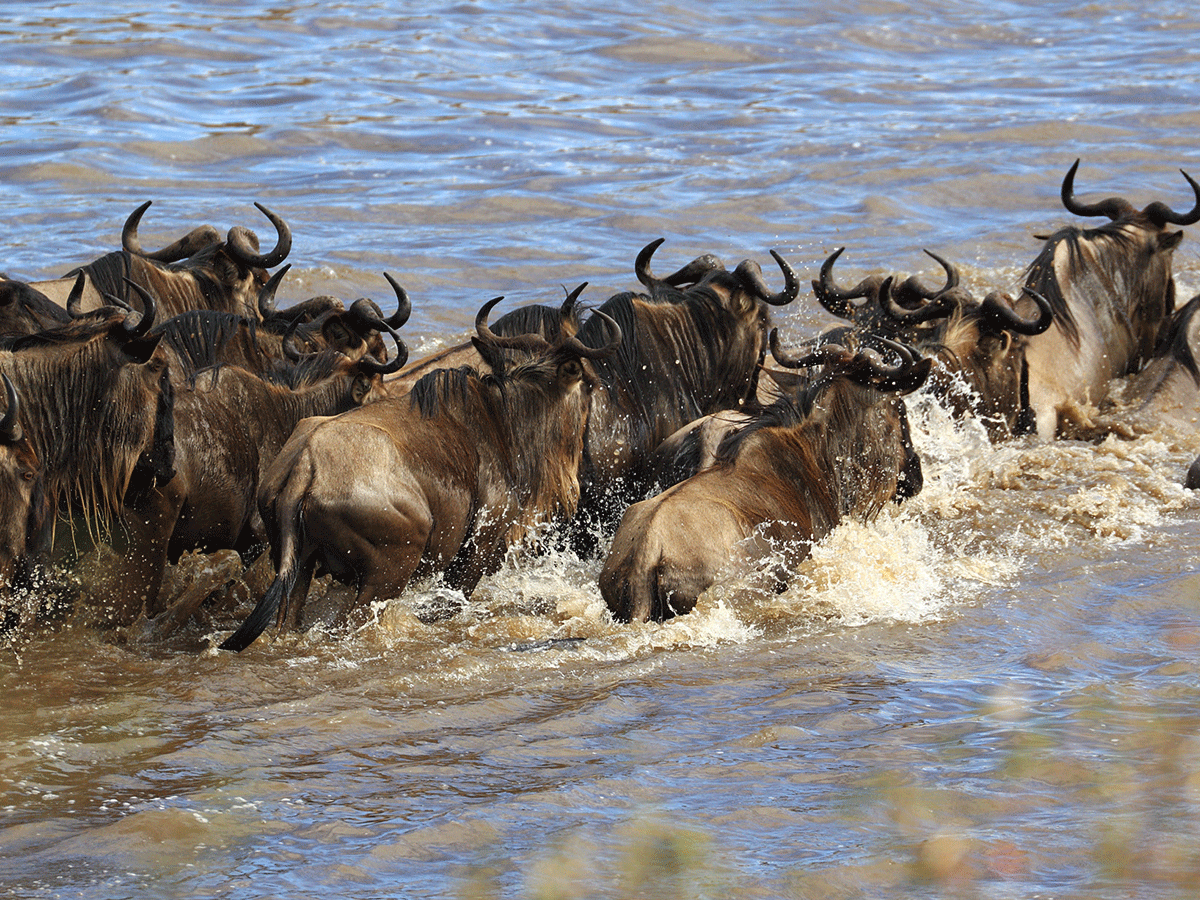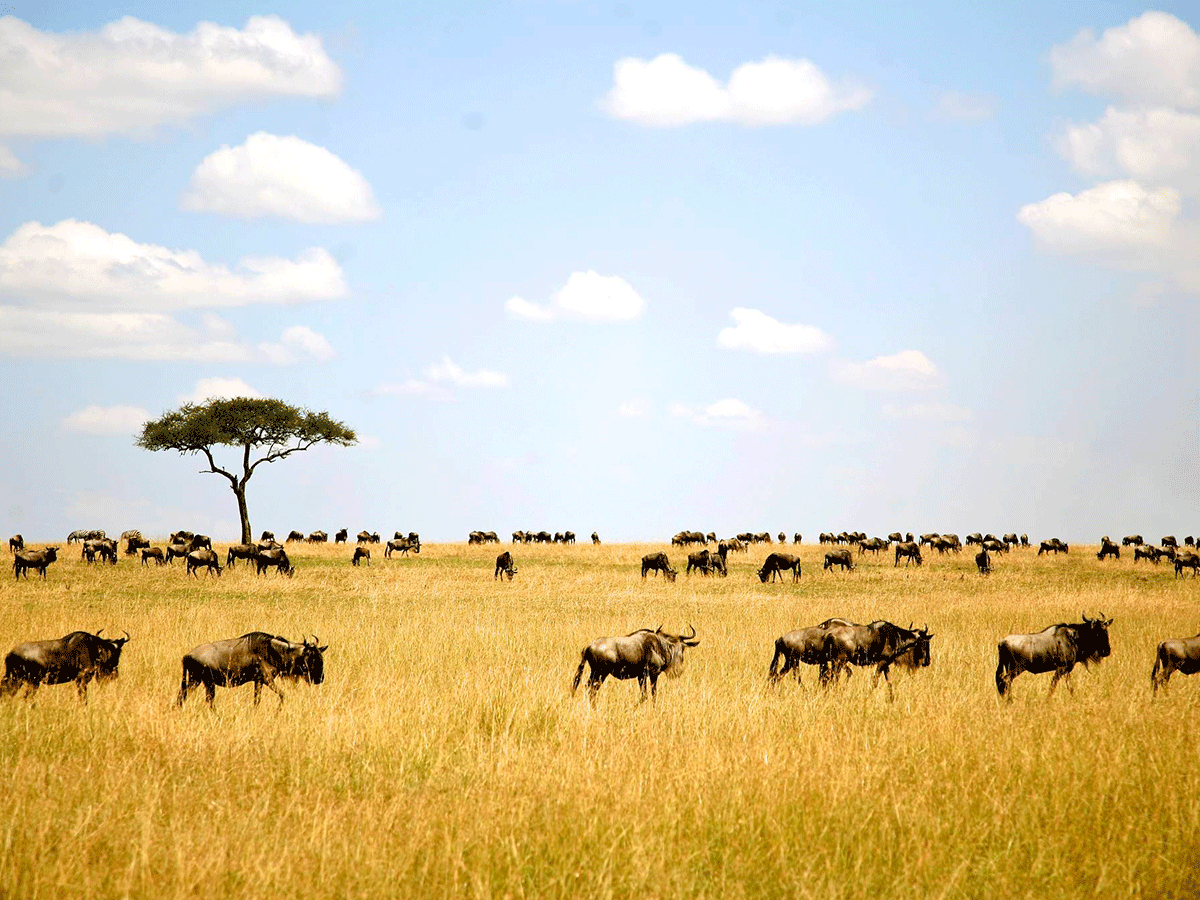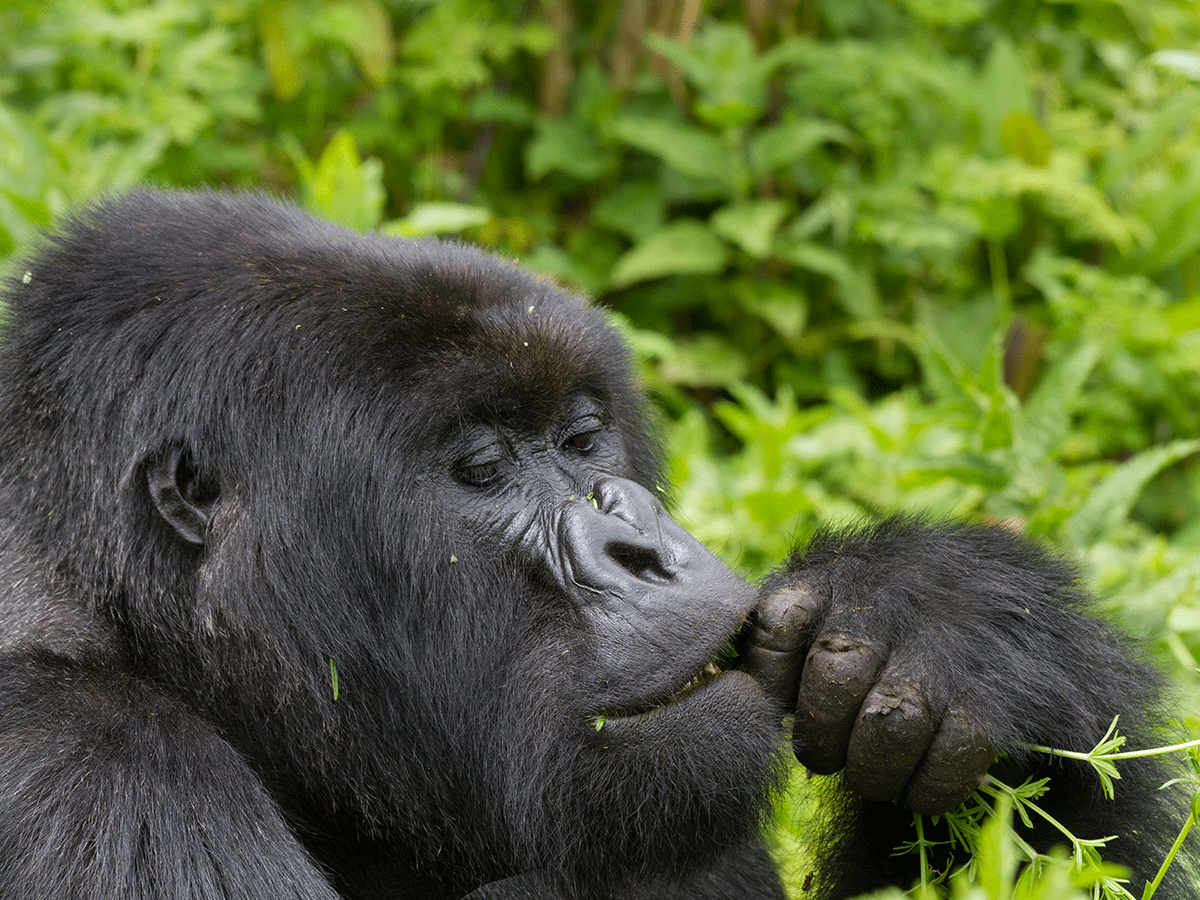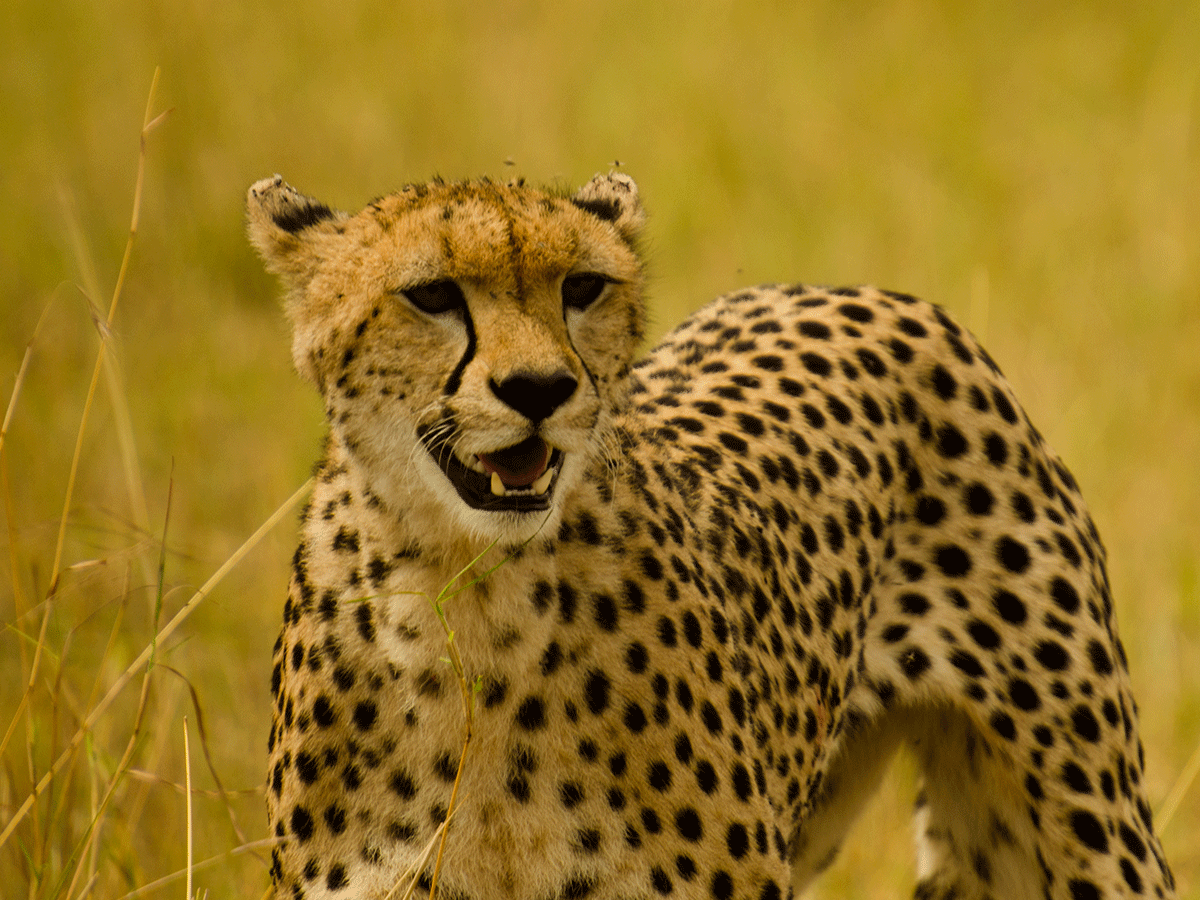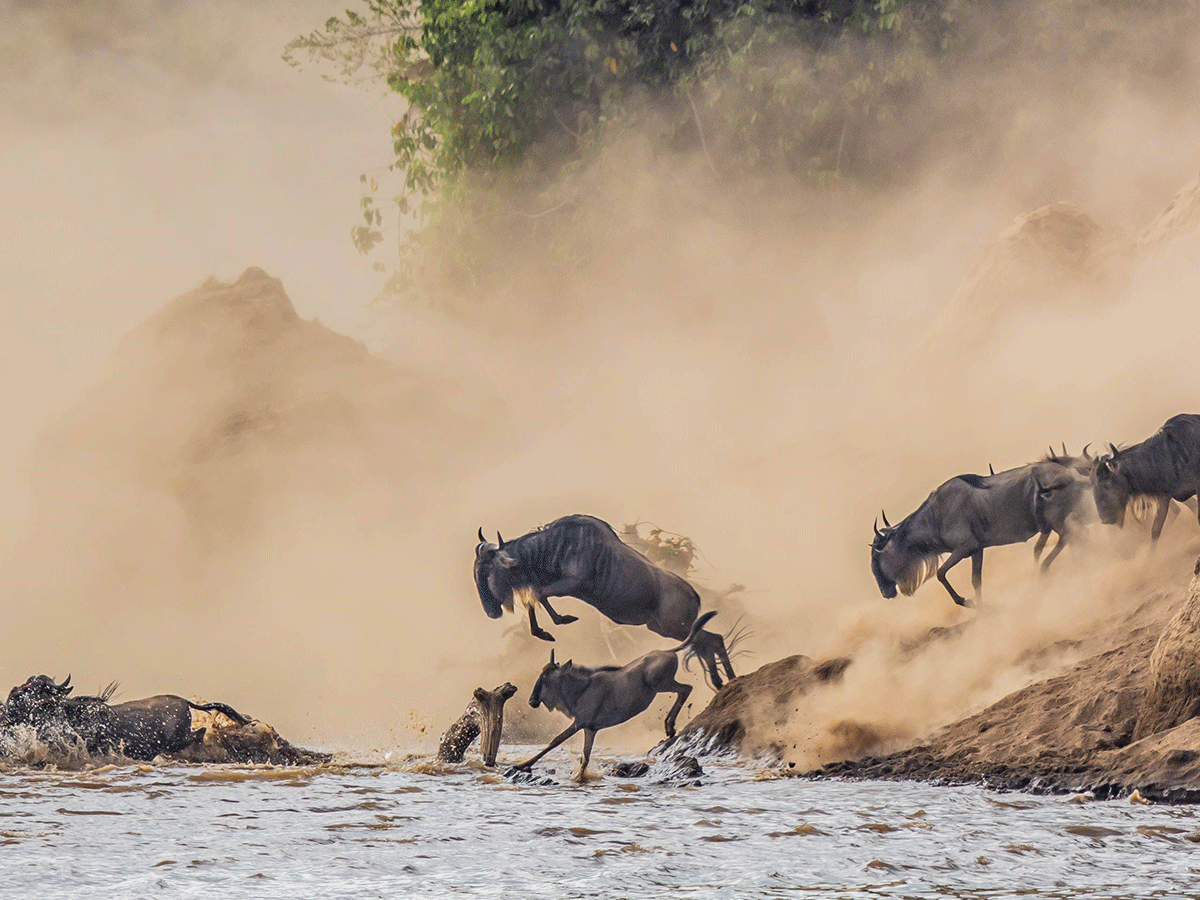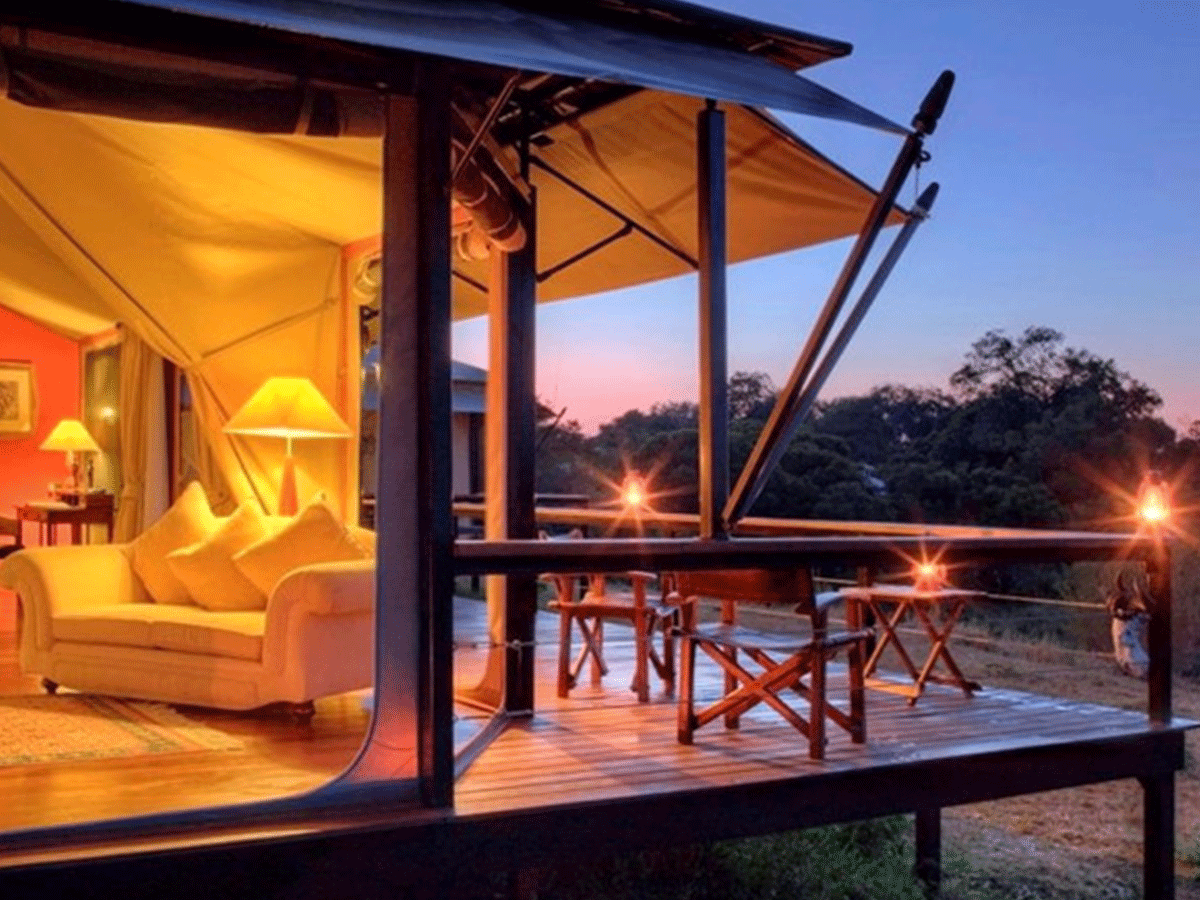Serengeti Wildebeest Migration Safari Tanzania
Home » Best African Safari Tours & Holidays » Serengeti Wildebeest Migration Safari Tanzania
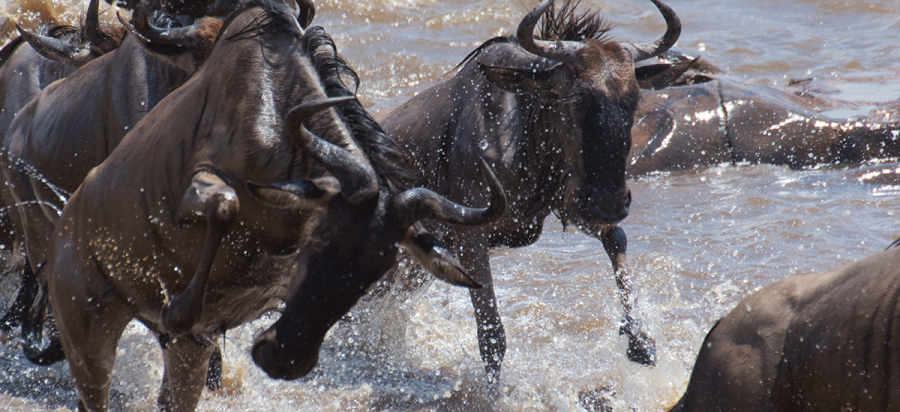
The Mighty Serengeti plains play a host to one of Africa’s greatest wildlife spectacles in the entire animal kingdom, the wildebeest migration which takes place between Serengeti and Masai Mara, Serengeti is well known for world’s largest concentration of big cats like lions, cheetah, and hyenas. The wildlife migration referred to as “The Great Wildebeest migration” is an annual movement of a large group of animals of about 2 million, the largest wildlife being the wildebeest some zebras and gazelle that move from Serengeti national park northwards to Masai Mara National Park and back to Serengeti. This migration is one of the prime attractions of the park. Other animals in the park include elephants, leopards, buffalo, giraffes, and many antelopes. Serengeti national park is a fascinating place for wildlife viewing throughout the year. Depending on one’s interests in wildlife activities, different months come with different things to see and enjoy while in Serengeti national park.
What sparks the Annual Wildebeest Migration in Serengeti?
Studies using aerial photography show a remarkable level of organization in the structure of the wildebeest herds as they start moving. The groups display a wavy front that snakes out like the head of a swarm. This amazing structure cannot be apparent to each individual wildebeest, which means that there is some degree of decision-making that is happening between the animals. Is there some sort of leadership being displayed; maybe a form of communication we don’t yet know about?
Some scientists believe that the wildebeest are motivated by the chemistry of the grass. The herds are attracted to higher levels of phosphorus and nitrogen, which change in response to the rains. So perhaps the wildebeest are merely following their taste.
Which animals participate in the annual Wildebeest Migration in Serengeti?
Over 1.8 million wildebeest will lead the way as the rains approach in the Serengeti in late October or November and this is accompanied by 400,000 Thomson’s gazelle, 400,000 Zebra, and 11,000 Eland. These are the main migratory wildlife and they cross the ranges of over a quarter of a million other resident herbivores and, of course, carnivores. The lions, hyenas, leopards, cheetahs, and lesser predators will always follow the migration and this will be evidential as more numbers of predators are seen following the wildebeest migration at the beginning of the circle.
Month to Month guide to where to go during the Wildebeest Migration
The Serengeti wildebeest migration is an annual mass movement of ungulates between Serengeti and Masai mara and this is a continuous event that involves crossing the Mara River which is the greatest obstacle during the Migration and this is largely triggered by the need for water and green pasture and our guide will give you an insider of where the wildebeest are more likely to be during each month.
January, February, and March wildebeest migration movements
In January, wildebeest and zebra herds continue to move south, mostly along the eastern edge of the Serengeti toward the fresh short grasses of the Ndutu plains, while much of the migration has already arrived in the southern Serengeti near Lake Ndutu where the animals will graze and prepare to drop their young. Large herds dot the plains as far as the eye can see and predators watch the herds closely.
In February, the calving season is in full effect as huge herds of wildebeest dot the vast grassy plains of the southern Serengeti and Ngorongoro Conservation Area, all dropping their young in a two- to a three-week span of time, with predators ever-present and ready to hunt the weak and vulnerable members of the herds.
In March, the herds of nearly two million wildebeest and zebra remain fairly stationary; feasting on fresh grasses in the southern plains of the Serengeti and Ndutu, as their new calves grow stronger and prepare to move north. A hot-air balloon safari over the plains is a great way to get a perspective on how truly massive the herds are.
April, May, and June Wildebeest migration movements
In April, the herds begin to journey north toward the central and western sectors of the Serengeti national park and the Grumeti River. Many camps close this month for maintenance, as April also marks the beginning of the long rains in East Africa. With the migration on the move, it can be a good time to stay in central Serengeti.
In May, the migration pushes northwest into the western corridor of the Serengeti the herds tend to stagger, with some arriving in the western reaches of the park near the Grumeti River first, while others can still be found farther south and near the central area of the park. Those that reach the western edge first tend to venture into the private Grumeti Reserve bordering the park. At the end of the month, they begin to form a mega-herd again.
In June, a large migration herd is formed in the western Serengeti on the southern banks of the Grumeti River, with some smaller groups farther east in the central Seronera area of the park. The wildebeest and zebra tend to grow into a mega-herd before crossing the crocodile-filled Grumeti River to continue north. June also begins the rutting, or breeding, the season for the wildebeest, creating a lot of activity and excitement amongst the herds, as males exhibit their prowess and fight for female favor.
July, August, September, and October Wildebeest Migration Movements
In July, as available grasses are exhausted and begin to dry, the herds move northward for fresh grazing. With some of the herd still in the Western Serengeti and Grumeti Reserve, they continue to move northeast in search of greener plains, many arriving at the Mara River and Lamai Triangle in the northern Serengeti in mid-to late-July. These front-runners may begin the treacherous crossing of the crocodile-filled Mara River, while others graze in the northern Serengeti.
In August, wildebeest and zebra herds begin their annual crossing of the Mara River, which cuts across the northwest corner of the Serengeti and up through the Masai Mara. They continue in search of fresh grasses on the other side of the river. While herds pour across the unfenced border into Kenya, some also stay in the northern Serengeti, where river crossings, though unpredictable, can be seen almost daily at this time of year.
In September, the migration herds continue to arrive and feed on the grasses in Kenya’s greater Masai mara viewing wildebeest and zebra crossing the Mara River in herds is also still a common occurrence. The abundant local wildlife only enhances the overall experience, and this is simply an excellent time of year to be in Kenya.
In October, the migration can still be found in the Masai Mara and northern Serengeti as herds continue to graze in large numbers with lions and other predators always in the vicinity. River crossings can still be seen on occasion. As the short rains begin to brew toward the end of October, the first of the herds begin to journey back south along the eastern edge of the Serengeti and Loliondo following new grasses.
November and December wildebeest migration Movements
In November, the short rains have begun to fall, and the bulk of the migration herds move quickly south with the goal of reaching the short-grass plains once again. The mega-herd breaks into pockets of wildebeest and zebra that can be found in the northern Serengeti moving to the central Seronera plains, while many are found along the eastern border near the private reserves of Loliondo.
In December, the migration continues moving south toward the short-grass plains of Ndutu in the Ngorongoro Conservation Area. Some herds can be spotted in the central and eastern Serengeti as they move south, while early arrivals can be found already in Ndutu feasting on fresh grasses. This is a nice time to see large herds thundering across the plains and beginning to gather in the south.
Where to stay during Serengeti Wildebeest Migration
The Ndutu area in the northern part of the Ngorongoro Conservation Area joins the Serengeti. As such, it forms part of the annual migratory route of hundreds of thousands of wildebeest, zebra, antelope, and their predators who come to graze and calving season is between January and March, depending on the rains. The forests around Lake Ndutu and small koppies are also home to prolific resident wildlife.
The Ndutu area forms the north-western part of the Ngorongoro Conservation area, which covers an area of just over 8,000 km² and includes the spectacular Ngorongoro Crater, the Olduvai Gorge, forests, mountains, and the vast plains of Ndutu stretching unfenced to Serengeti.
The Ngorongoro Conservation Area is famous not only for its beauty and wildlife but also for allowing human habitation. The local Maasai tribe still lives on subsistence farming within the area. It is not unusual to see a Maasai herdsman with his cows heading over sweeping grasslands dotted with wildebeest and zebra.
From December to May, depending on the rains, the plains of Ndutu are populated by huge herds of wildebeest, zebra, and antelope as they settle on the fertile grasslands to calve. As is to be expected of nature, the predators come in droves too, feasting on the vulnerable young. It’s a smorgasbord of wildlife and the natural circle of life.
Best time to be in Serengeti during the Wildebeest Migration
The best time to be in Serengeti largely depends on what you are looking for and we highly recommend February and Early march when the wildebeest calving is taking place where over 5000 wildebeest calves are born within 3 weeks in the heavy presence of predators and during July to October when the wildebeest Mara river crossing taking place, this is one of the dramatic wildlife scenes in Africa where the wildebeest cross in presence of big Nile crocodiles and sometimes heavy currents.
SAFARI TOURS AND HOLIDAYS
THINGS TO DO
WHERE TO STAY
WHEN TO GO
| Best time to witness Wildebeest Migration in Serengeti |

